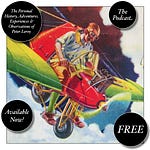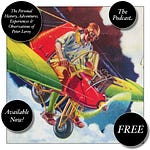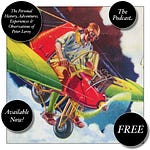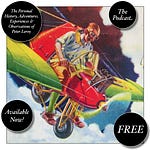1
I WAS STANDING IN A LOCKER in the Purlieu Street School on an August night, when a locker was a hot place to be. I was ten. I would be attending the Purlieu Street School in the fall, when I started seventh grade, if the building was finished in time.
The Purlieu Street School was supposed to get the schoolchildren of Babbington—my home town, the clam capital of America—off split session once and for all. Split session was a means of fitting more students into a crowded school system than it ordinarily would hold. Since the end of World War II, Babbington had been growing so quickly that people couldn’t adjust their thinking to it, growing “by leaps and bounds,” as people said then. In developments all over town, carpenters built houses furiously. The air resounded with their hammering. Families moved into the new houses as fast as they went up. During the sixth grade, a new boy or girl seemed to show up in class every week. The schools were chronically overcrowded, and about once a year the need to build yet another one took everyone by surprise.
The point when a new school was necessary always arrived before the point when it was built, and no one recognized the point of necessity until it was past, although I think that if the computational power had been available the point of necessity might have been predicted, since each child was an atom, a mathematical point, in the social scale of things. Each newborn, each child reaching school age, each child reaching a certain grade level could have been plotted on a graph as a point, and if that had been done, then there would certainly have been a singular child on that graph whose arrival in Babbington, by birth or immigration, could be predicted to break the back of the system, one child for whom there would be no floor space at nap time in the Babbington kindergarten, no slice of meat loaf in the elementary school cafeteria, no locker in the high school gym unless another new school was built. Alas, in those days before integrated circuits on semiconductor chips, people had to rely on pencils, paper, mechanical adding machines, and brains, so the arrival of the child who broke the back of the system was always a surprise, and it always precipitated a scramble to build a new school.
In the period between the time when the need for a new school was finally recognized and the time when that new school actually opened, space was often so short that the sessions were split: half the students went to school only in th e morning, the other half only in the afternoon. I spent most of the sixth grade on split session. An advantage was that I was free to watch “Fantastic Contraptions” on television every day at noon. This program was hosted by Fred Lucas and Florence Hill, who had once been fairly successful in the movies, and then, as Freddie and Flo, had been enormously popular on radio, where they had a weekly comedy program. The Freddie and Flo Show didn’t make the transition to television, and for a while their career seemed to be over. I guess they were lucky to get a job as hosts of a giveaway program in the obscurity of midday. It may have been Siberia to them, but it was the perfect time for me, since the noon hour was the gap between school sessions. On the shaky base of “Fantastic Contraptions” Freddie and Flo built a new popularity as scatterbrained humorists. Later, as their popularity peaked, they began appearing in special shows on nighttime television, too, but they were different people there, and everything they did at night was cautious, calculated, and aimed at adults. The Flo and Freddie I admired were not the Flo and Freddie of their nighttime specials, not the Flo and Freddie of strained artiness and pronounced significance who are trotted out now and then in television biographies illustrated with clips from those specials. I preferred the everyday variety—improvisational, quick, uneven, occasionally silly, always fascinating.
The giveaway program, a feature of the early days of television, was a type of show in which members of the audience were rewarded simply for being there. They didn’t have to answer questions or perform stunts to collect prizes; they just had to show up. That seems unlikely today, I suppose, but the medium was very young then, and broadcasters were still uncertain about how to find and build an audience for it. Some genius must have realized that people would want to watch other people being given things, and that the viewers would come back again and again to see more people get gifts, especially if the people seemed to have done nothing more to deserve these gifts than getting themselves to the television studio, because it seemed to validate the ultimate in groundless hopes: that fate might reward a person simply for being alive. This genius must also have understood that it wouldn’t be a warm, selfless pleasure at witnessing others’ good fortune that would keep the viewers tuning in. It would be envy.
At first, the hosts of giveaway shows didn’t do much more than chat with people for a minute or two before handing over some dishware or a reclining chair, but soon there arose an informal and undeclared competition. The people who chatted with the host began trying to be more interesting than their fellows in the audience: to be funnier, more foolish, or more intelligent, or even to seem more miserable than the others. These distinctions were rewarded. A set of silverware might be added to the dishes, or an ottoman to the lounger. In time, of course, the format for displaying or demonstrating one’s distinctions from one’s fellows was codified, formalized, and specified for each show, and the competitive type of show was born. This eventually led to the quiz show, but there was an intermediate type of show in which people had to perform humiliating stunts for cash and prizes. I do not count these as quiz shows since the contestants weren’t required to know anything. This type of show enjoys a revival from time to time. Part of its appeal is that it allows the viewer to cluck and guffaw at the ridiculous lengths to which his revolting fellow creatures will go, the depths to which they will stoop, the humiliation they will endure for a few dollars or a car or a set of pots.
[to be continued]
In Topical Guide 566, Mark Dorset considers Population Pressure: Effects of from this episode.
Have you missed an episode or two or several?
You can begin reading at the beginning or you can catch up by visiting the archive or consulting the index to the Topical Guide.
You can listen to the episodes on the Personal History podcast. Begin at the beginning or scroll through the episodes to find what you’ve missed.
You can listen to “My Mother Takes a Tumble” and “Do Clams Bite?” complete and uninterrupted as audiobooks through YouTube.
You can ensure that you never miss a future issue by getting a free subscription. (You can help support the work by choosing a paid subscription instead.)
At Apple Books you can download free eBooks of Little Follies, Herb ’n’ Lorna, and Reservations Recommended.
You’ll find overviews of the entire work in An Introduction to The Personal History, Adventures, Experiences & Observations of Peter Leroy (a pdf document) and at Encyclopedia.com.












